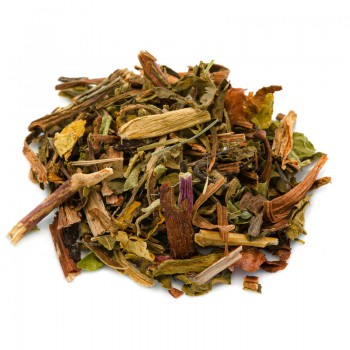This herbal remedy, derived from the plant also known as Silybum marianum, owes its fortune to the active ingredients contained such as silymarin . Thanks to these plant compounds, it can give our body natural antioxidant and anti-inflammatory benefits.
Milk thistle: properties and benefits
The silymarin and other substances contained in this medicinal herb have traditionally been used to treat liver problems, and secondly to stimulate the secretion of breast milk. Considered for its liver protective effects, milk thistle was indicated in cases of spurious liver failure, acute hepatitis, infectious and toxic hepatitis. Additionally, it was an ancient natural cure for conditions such as cirrhosis and fatty liver disease.
It is still used today as a complementary herbal medicine by people who have liver damage due to conditions such as alcohol damage, fatty liver, hepatitis and other liver disorders. It is considered beneficial to protect the liver from toxins, and they want to reduce the inflammation of this organ. The free radicals contained in milk thistle can give relief to liver processes, when the liver metabolizes harmful substances.
Its antioxidant properties , due to silymarin, are also considered useful in the prevention of aging, in particular with neuro-protective functions. Always this antioxidant substance, in a milk thistle herbal tea, can give relief for irritations that lead to headaches, joint pains and stomach disorders.
In this regard, for those suffering from constipation, swelling, cramps or excessive flatulence, an infusion of milk thistle can help the digestive system, ensure proper absorption of nutrients and lighten inflammation in the tissues of the intestine.
The milk thistle seed tea also has diuretic properties, it is excellent for detoxifying from excess fat, toxins and water. Diuresis can reduce the strain on the kidney and lymphatic system - it helps kidney and bladder health.
Historically, milk thistle was famous for increasing breast milk production while breastfeeding.
Even today, the galactogogue effect according to studies is promoted by silymarin and other bioflavonoids (phytoestrogens), which stimulate prolactin, the responsible hormone to milk production. A phyto-complex is extracted from milk thistle which is then combined with other plant complexes for maximum effects.
Origins and History of cultivation
This plant is native to the Mediterranean region, is quite hardy and can survive in temperate and moderate climates, which is why it is found all over the world today. The name milk thistle derives from a Christian legend. The characteristic purple flowers have white veins, which were caused by a drop of the Virgin Mary's milk that fell on her leaves while breastfeeding Jesus on the flight to Egypt.
It has been used in traditional medicine for thousands of years, using the powerful active ingredients found in flowers and seeds. It was used primarily to treat liver and gallbladder ailments, promote breast milk production, and protect the liver from toxic snake bites, alcohol, and other environmental poisons. Even today, it continues to be one of the favorite choices of herbal medicine and natural remedies professionals.
Plant and flowers
The herbaceous plant of milk thistle (Silybum marianum (L.) Gaertn.) is biennial or annual, and belongs to the Asteraceae family. Mediterranean basin, robust, growing up to one meter in height and showing a branched stem. It takes two years to complete the growth cycle, and is known for its uniquely shaped flower, and leaves that are pungent to the touch if not careful.
The flower heads are purple-red and bloom differently: in summer in the north and in winter in the southern hemisphere. The fruits are black achenes with a long white pappus. Each milk thistle flower can produce nearly 200 seeds, so around 6,000 seeds are harvested in one plant each year.
Nutritional values of Milk Thistle
Like many seeds, those of milk thistle have few calories (kcal 17/100 g), good amounts of fiber, sugars, proteins,some protein, low fat. There are precious minerals such as potassium, sodium and calcium.
In its fruits, achenes, contains the mixture of flavonolignans (structure of flavones and lignans) called silymarin, whose active ingredient is sibilin. It also contains several bioflavonoids (phytoestrogens) also part of the flavonolignans, which support regular female hormone production and breast milk.
How to use milk thistle as an herbal tea and in the kitchen
Milk thistle tea is obtained by infusing the crushed seeds of the plant, and the fruits - the achenes very rich in silymarin and flavonoids. For a good infusion, it is advisable to use the milk thistle seeds for one cup (250 ml), about 3-5 grams with water at 100 ° C. Leave to infuse for 10 to 12 minutes, before drinking the herbal tea.
Add honey or sugar if you wish.
Milk thistle: side effects and contraindications
Although it is a safe herbal tea made from seeds, taking too much milk thistle could cause a number of side effects, including headache, nausea, diarrhea, bloating. . Allergic reactions are also possible, in people with allergies to ragweed, daisies, artichokes, kiwi.











 No reward points for this product.
No reward points for this product.





